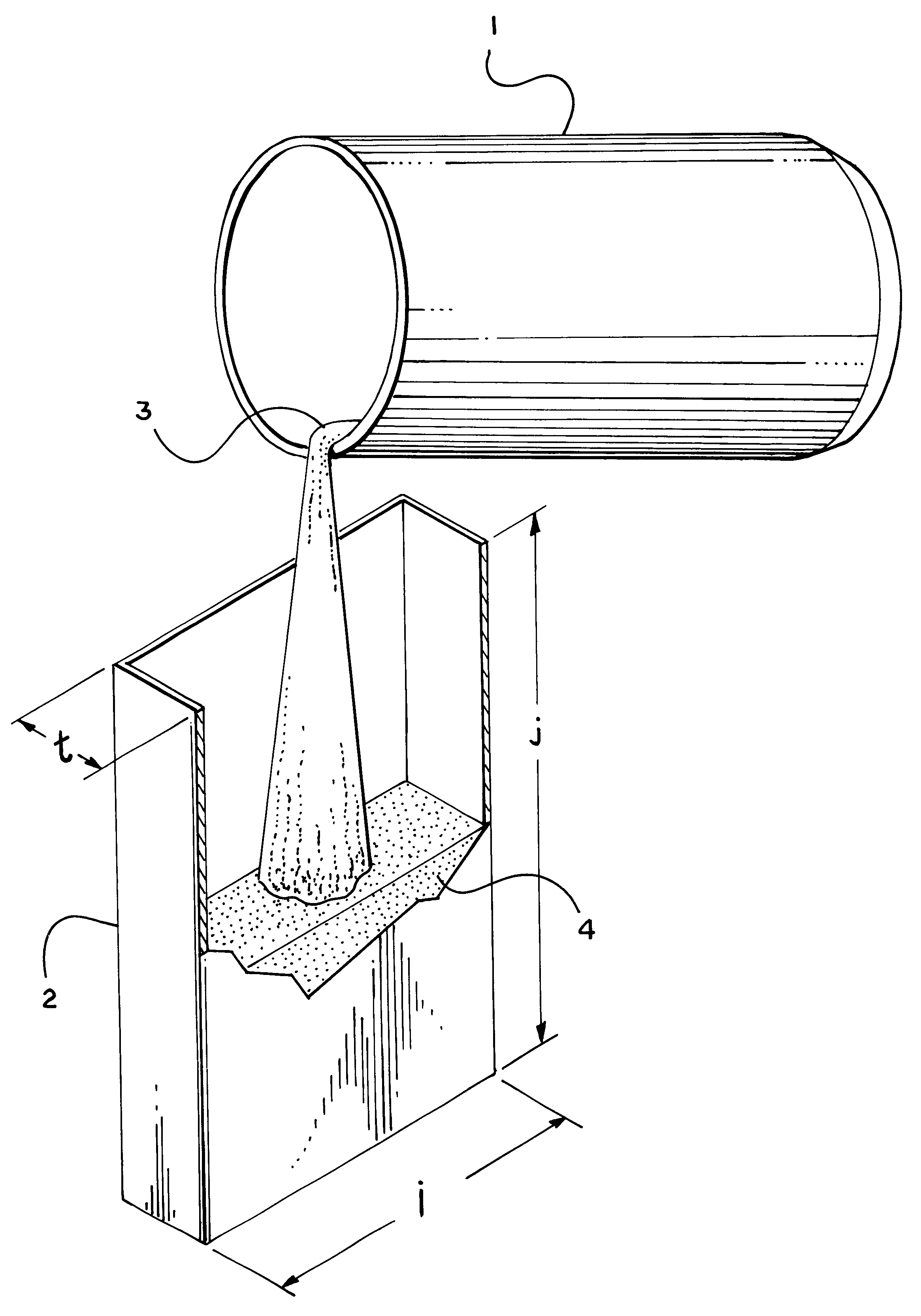Sputtering target for depositing silicon layers in their nitride or oxide form and a process for its preparation
a technology of sputtering target and silicon layer, which is applied in the direction of application, vacuum evaporation coating, coating, etc., can solve the problems of boron or phosphorus doped polycrystalline silicon tiles that are rather brittle and expensive, and the target is in short supply, so as to achieve the effect of high aluminum doping level
- Summary
- Abstract
- Description
- Claims
- Application Information
AI Technical Summary
Benefits of technology
Problems solved by technology
Method used
Image
Examples
example
Various alloys, which comprised industrially pure silicon and aluminum, i.e. 99.5% purity with respect to the metal in each case, were melted in a vacuum induction oven. Graphite was used as the crucible material. The receptacle used as the casting mold had the following dimensions: width 110 mm, thickness 16 mm and height 330 mm. The casting mold, of graphite was preheated to approximately 200.degree. C. and was introduced into the vacuum oven through sluices directly before casting.
The following alloys were melted:
a) Si 99.5% purity without Al doping
b) Si 99.5% purity+1 wt % Al
c) Si 99.5% purity+5 wt % Al
d) Si 99.5% purity+10 wt % Al
e) Si 99.5% purity+15 wt % Al
The purity of the aluminum is 2N5 to 5N purity.
Whereas with pure silicon (Example a), only completely broken up cast components were capable of being prepared, even after varying the deposition conditions, it was possible to produce intact plates starting from alloying levels of only 1 wt % Al. However, the cast plates with...
PUM
| Property | Measurement | Unit |
|---|---|---|
| temperature | aaaaa | aaaaa |
| temperature | aaaaa | aaaaa |
| power | aaaaa | aaaaa |
Abstract
Description
Claims
Application Information
 Login to View More
Login to View More - R&D
- Intellectual Property
- Life Sciences
- Materials
- Tech Scout
- Unparalleled Data Quality
- Higher Quality Content
- 60% Fewer Hallucinations
Browse by: Latest US Patents, China's latest patents, Technical Efficacy Thesaurus, Application Domain, Technology Topic, Popular Technical Reports.
© 2025 PatSnap. All rights reserved.Legal|Privacy policy|Modern Slavery Act Transparency Statement|Sitemap|About US| Contact US: help@patsnap.com


